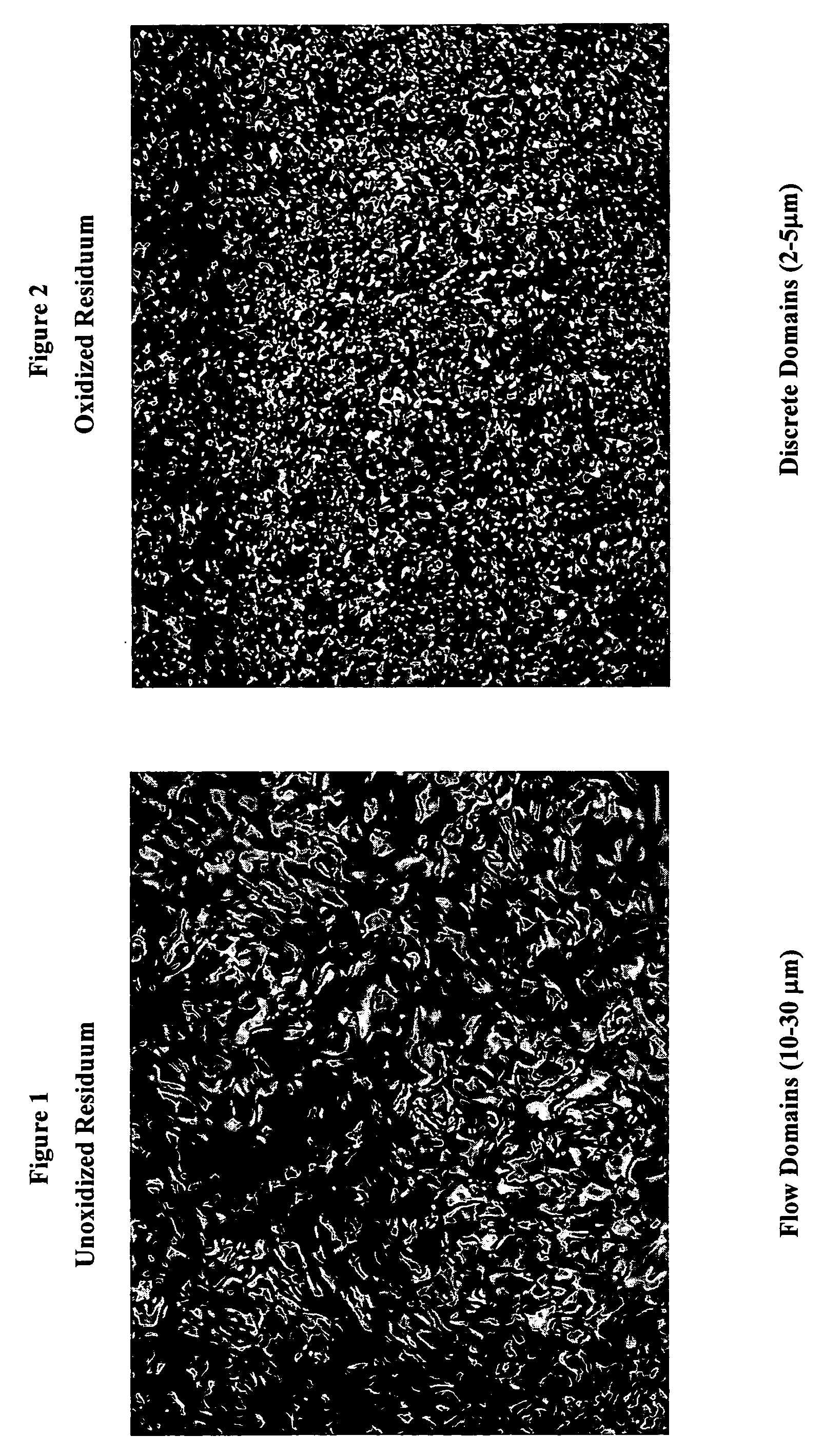Delayed coking process
- Summary
- Abstract
- Description
- Claims
- Application Information
AI Technical Summary
Benefits of technology
Problems solved by technology
Method used
Image
Examples
examples
General Procedure for Oxidizing Agent Treatment
[0045] Approximately 180 g each of five different petroleum residua were added to a 500 cc round bottom flask equipped with a Therm-O-Watch controller, a mechanical blade stirrer, and a condenser attached to a Dean-Stark trap to recover any light ends and water generated during the reaction. The residuum was heated to 180° C., at which time air was introduced into the hot residuum feed under its surface by means of a sparger tube. The temperature was raised and controlled to between about 220° to 230° C. and the flow rate of air was controlled at about 0.675 ft3 / hr for three hours or as required depending on the desired degree of oxidation. The sparger tube was removed after the desired time and the flask was allowed to cool to room temperature.
[0046] Deasphalting Procedure: A mixture of fresh or oxidized coker feed and n-heptane were added to a 250 cc round bottom flask in a ratio of 1 part feed to 8 parts n-heptane and allowed to st...
PUM
 Login to View More
Login to View More Abstract
Description
Claims
Application Information
 Login to View More
Login to View More - R&D
- Intellectual Property
- Life Sciences
- Materials
- Tech Scout
- Unparalleled Data Quality
- Higher Quality Content
- 60% Fewer Hallucinations
Browse by: Latest US Patents, China's latest patents, Technical Efficacy Thesaurus, Application Domain, Technology Topic, Popular Technical Reports.
© 2025 PatSnap. All rights reserved.Legal|Privacy policy|Modern Slavery Act Transparency Statement|Sitemap|About US| Contact US: help@patsnap.com

